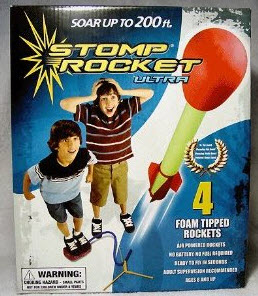
Posted on 04/16/2012 7:25:22 AM PDT by TigerLikesRooster
Experts Ponder Cause of N.Korean Rocket Failure
North Korea's rocket exploded two minutes and 15 seconds after launch, disintegrated into some 20 fragments and fell into the West Sea. The North unusually admitted the failure. Rocket experts attribute it to a problem with the first-stage booster, failed separation of boosters or a rushed launch schedule.
◆ Booster Problems
The first-stage booster exploded into about 20 fragments scattered over waters west of Taean far away from the point west of the Byeonsan Peninsula where the regime had predicted they would land.
About 56 percent of launch failures are caused by a problem with the first stage. The explosion is believed to have been caused by a fuel leak from a propellant engine or a turbopump malfunction rather than booster separation. Yoon Woong-sup, a professor of mechanical engineering at Yonsei University, said, "If a problem occurs during the booster separation process, there is low possibility that the first-stage booster will explode because its fuel is already spent."
But Cho Kwang-rae, the head of the Korea Aerospace Research Institute's satellite launch project, said, "Nobody can rule out that a problem occurred during the separation of the first-stage booster."
Considering that another rocket failed to place a satellite into orbit due to insufficient liftoff thrust in 2009, the North may have overcompensated and increased the engine's liftoff thrust too much this time. Or the rocket may have been exploded by remote control, or an automatic explosion trigger was activated when the rocket veered off course, other experts speculate.
◆ Rushed Launch
Still others speculate that the accident occurred because the North rushed the launch to coincide with the centenary of nation founder Kim Il-sung. It is unclear why the regime launched the rocket from a fog-shrouded launch pad on Friday morning, a day earlier than experts had predicted.
"Given the insufficient preparations at the Tongchang-ri launch pad, we got the impression that the North was in a hurry," a South Korean government official said. "The regime may have been negligent in the final checkup" because other pressing centenary events lay ahead over the coming days.
◆ No Progress
In April 2009, the rocket failed to enter orbit, but the second- and third-stage boosters separated successfully. But this time, even the first-stage booster failed to separate and exploded in midair. The North has so far failed four times to launch long-range missiles or rockets since the first one in 1998.
A South Korean military source said, "Even in some advanced countries, rockets have exploded on their launch pads. That doesn't mean the North's missile technology has regressed."
"It's true that the North's long-range rockets still lag far behind those in the West in terms of appearance, but it seems that the technology has gradually improved since 1998," a rocket expert said.
I guess they rushed it, to keep from losing face, the foreign press there made additional pressure. My guess? Next time, they will invite no foreign press observers.
The engineers were complaining that the monitoring they were doing couldn't react fast enough due to slow computers to stop the overrun in time to save the engine and turbopump.
I think this is the writeup:
SSME history in several parts
From part III:
If only the normal operating torque were applied to the HPOTP without the fluid load applied (gas in the pump or in cavitation) it could accelerate from a dead stop to a destructive overspeed condition in less than a tenth of a second. The acceleration rate under this condition is almost 400,000 rpm per second.
In a sense it was in that they launched it in obama's face after his failed negotiations.

Their rockets fail because their rocket scientists know as much about rockets as the Obamaloon knows about the constitution.
I was curious about whether the rocket had even reached a high enough altitude for us to take it out in that manner. Though I tend to agree: not convinced at all that this administration would have opted to do that in any case.

And probably unnecessary at the technology level they're trying to achieve. They could easily produce pressure fed or gas pumped designs which might not achieve the pinnacle of mass ratio, but would have the decided quality of being more reliable. Even under duress of bad management decisions. I noticed the nuke programs (eg the Paki one too) had similar rigidity of design selection. Maybe the management culture doesn't reward innovation. Perhaps they might be more successful with an upper management change...?
Heheh...
It’s quite simple: Inferior, Chinese-made tinker toys.
"Funding for the program was cut in 2010 and the program was canceled in December 2011. It made its final flight on February 14, 2012 to Davis–Monthan Air Force Base in Tucson, Arizona to be prepared and kept in storage at the "Boneyard" by the 309th Aerospace Maintenance and Regeneration Group."

Natural gas leak.
All chinese made products are poor quality....
Pretty damning indictment of the substandard quality of Dear Leader's in-flight missile mechanics.
Hell, they could use the one the V2 used. All it was powered by was Hydrogen Peroxide (not your normal 3%) and passed through a silver screen. It was enough to power the V2.
If they were smart, they would use the J2 style engines in the Saturn 2nd stage. They still used turbopumps but they weren’t under as much stress as the SSMEs or the 1st stage Saturn’s. They also, if they’re smart, get the extra thrust put out by the turbopump’s power section instead of wasting it like I believe we did with the Atlas rockets.
Zer0 could get some street creds if he would claim responsibility for the NORK bottle rocket blowing up shortly off the launch pad.
Disclaimer: Opinions posted on Free Republic are those of the individual posters and do not necessarily represent the opinion of Free Republic or its management. All materials posted herein are protected by copyright law and the exemption for fair use of copyrighted works.